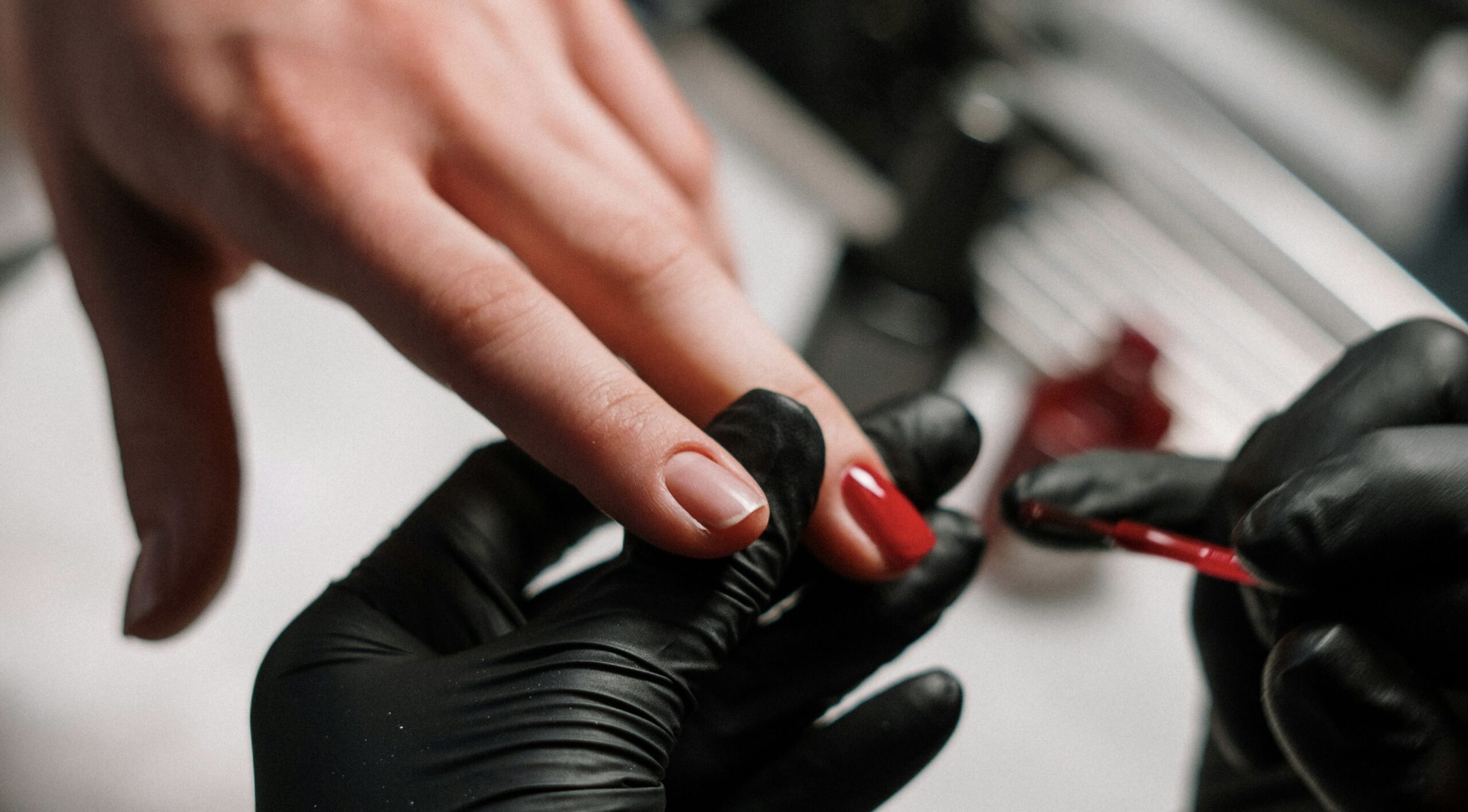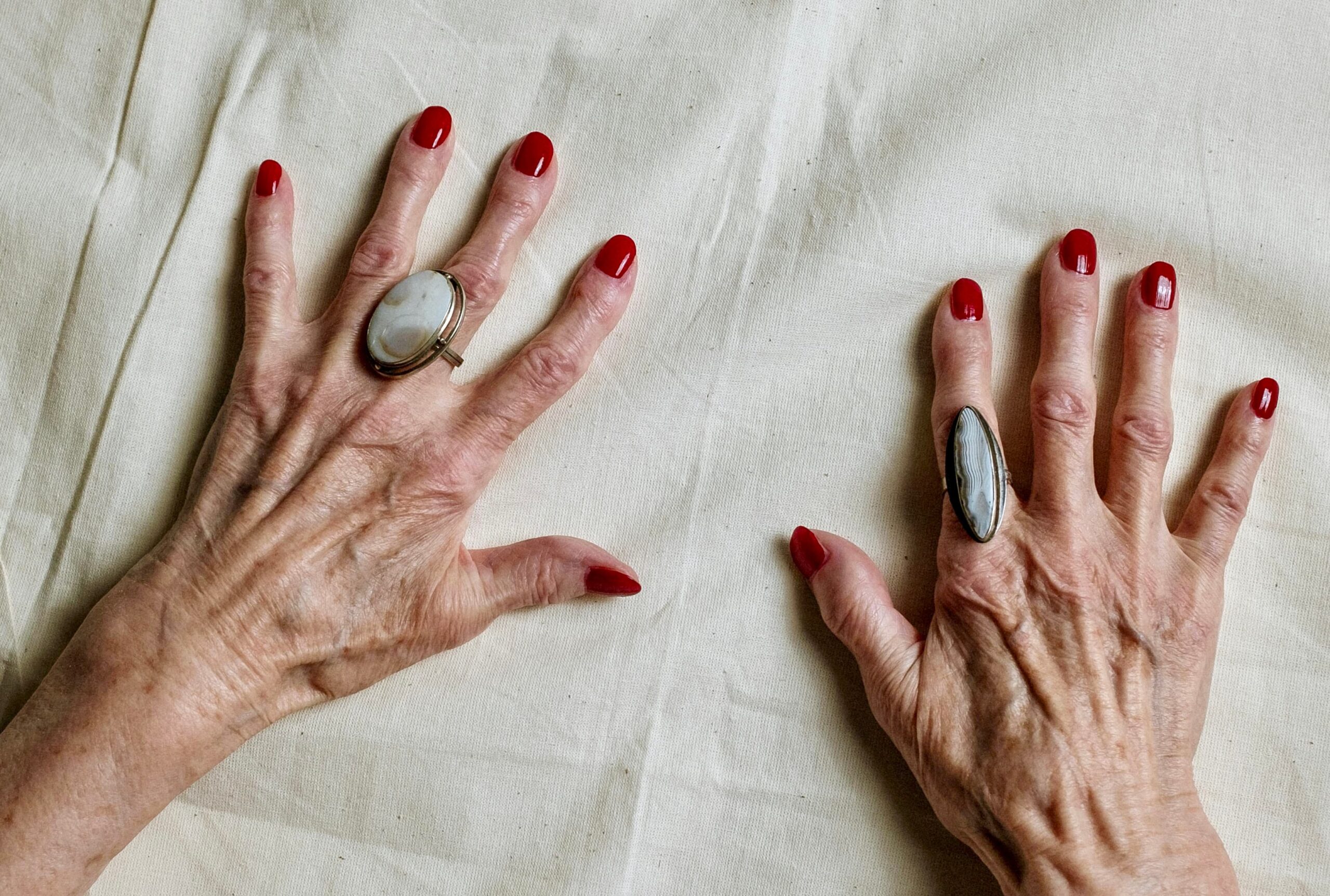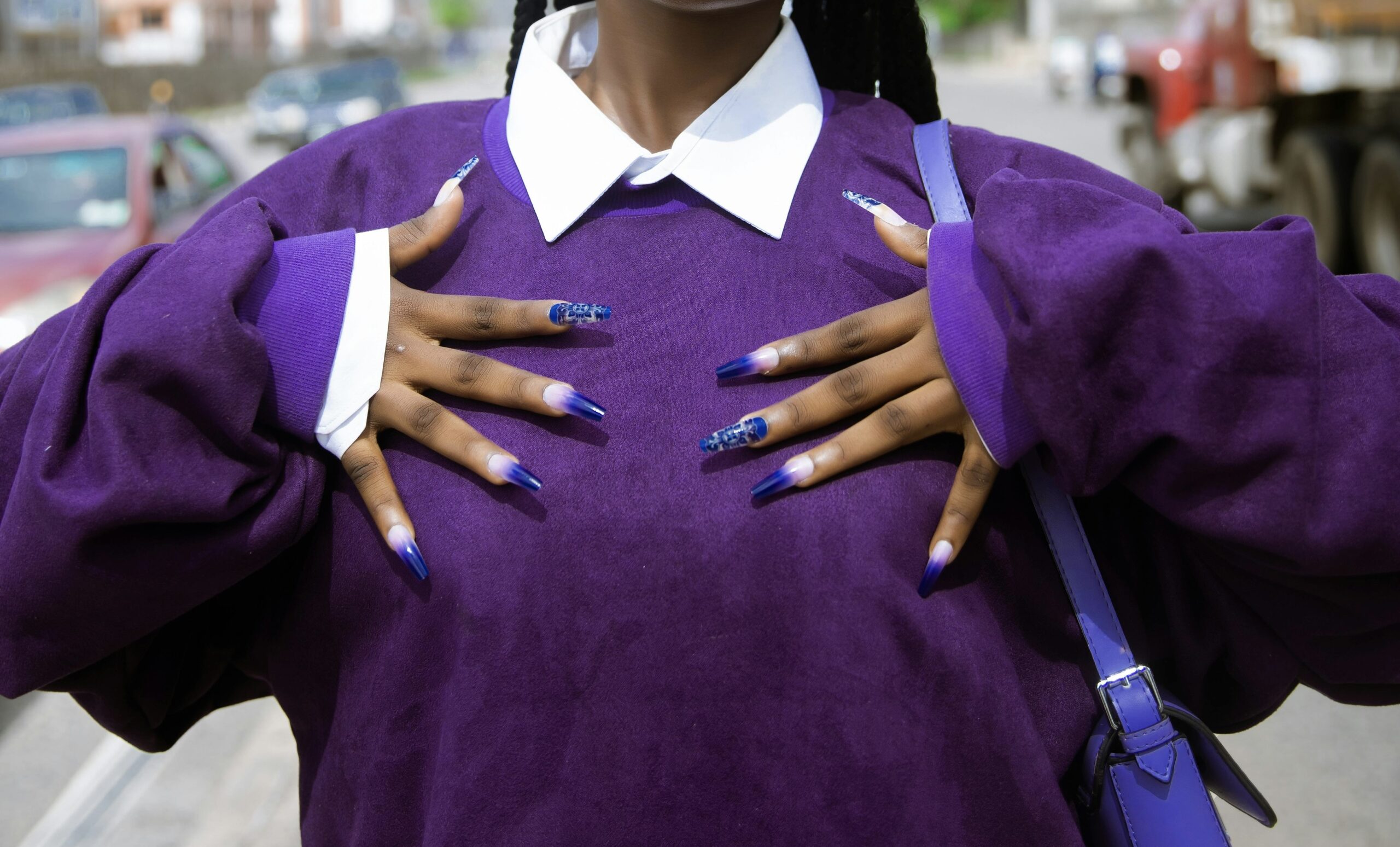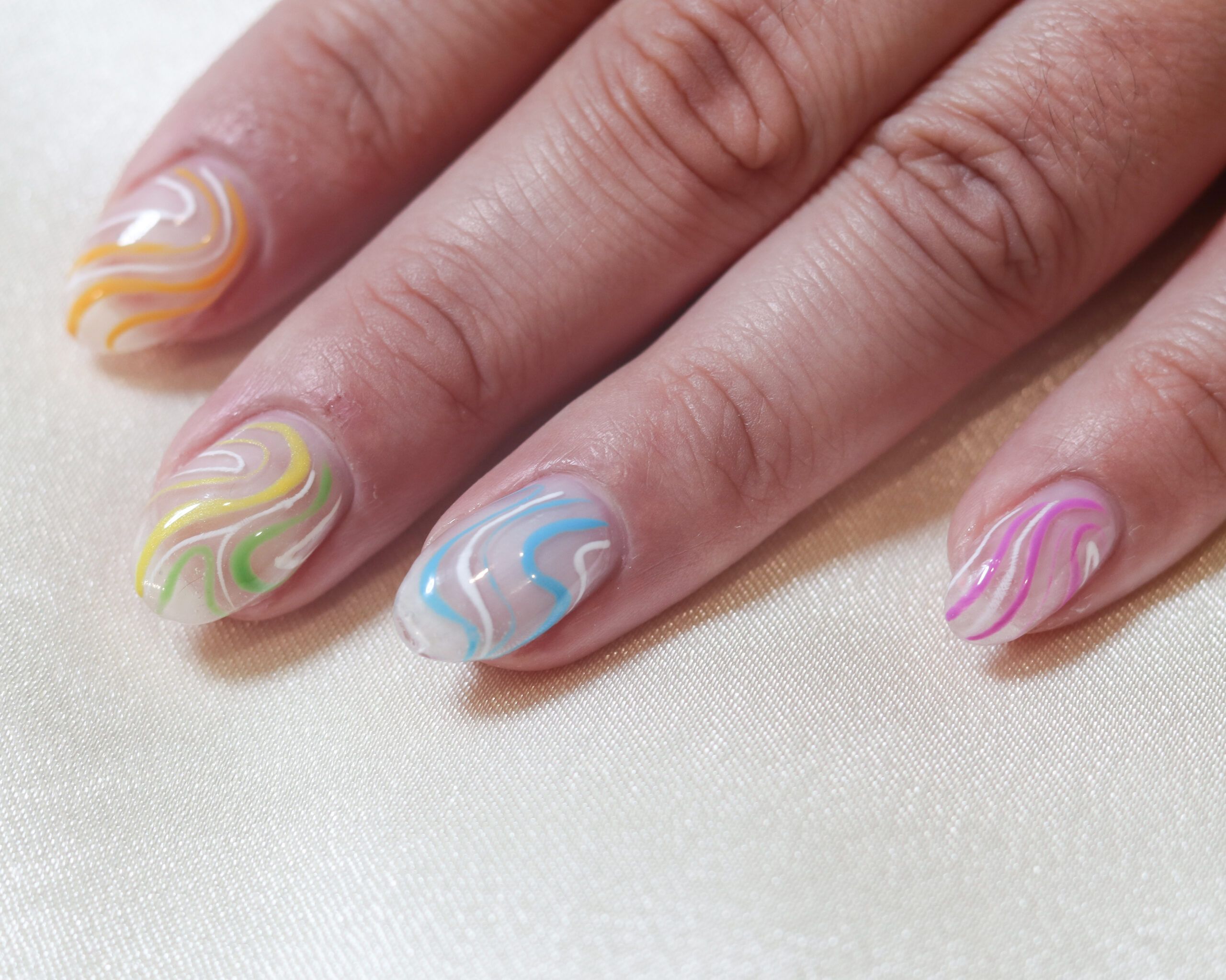Before starting nail technician school, I thought a manicure was just… a manicure. Maybe you could ask for regular polish or gel, and that was the extent of it. Fast forward to now: After learning the ins and outs of nail anatomy, product chemistry, and all the wild things people call “gel” when they really mean something else, I can confidently say: not all manicures are created equal.
So, if you’ve ever stared at a service menu wondering what the difference is between all the options, this post is for you.
Types of Nails at the Salon: What You’re Actually Choosing
Let’s break it down:

Regular Polish: The OG
This is the classic. Your nails get shaped, buffed, and painted with lacquer that air-dries. Think what you’d find in your mom’s nail drawer circa 2008.
Pros:
- Super easy to switch up
- Comes off with regular remover
- Budget-friendly and great for short-term wear
Cons:
- Chips fast—like, by day three fast
- Zero reinforcement for weak nails
Great if you’re indecisive or just want a quick vibe switch for the weekend.

Gel Polish (a.k.a. Shellac): The No-Chip MVP
When people say Shellac, they are referring to one of many brands of gel polish (not to be confused with gel nails). Gel polish is applied just like regular polish, but it contains ingredients that require curing each layer under a UV or LED lamp to harden.
Pros:
- Shiny and chip-resistant for 2–3 weeks
- Great for low-maintenance, natural-looking nails
Cons:
- Needs to be soaked or filed off
- Doesn’t add length or major strength
It’s perfect if you want your nails to look classic, but still last. It’s great if you want long-lasting polish for a one-time event or the occasional manicure.

Gel Nails: The Upgrade
Here’s where things get real. Gel nails use builder gel—a thick, sculptable product—to add length, shape, and structure. It’s applied in layers and cured under a UV or LED lamp just like gel polish, but this stuff builds the nail itself.
Pros:
- Can extend your nails or reinforce short ones
- Strong but still flexible
- Looks clean and natural or can be extra
- Best for regular manis—just fill, no full removal needed.
Cons:
- Takes a bit more time than a regular mani
- Costs more than a standard mani
- If you’re removing, removal takes a bit of effort
Bonus: most gel nail services combine gel nails with gel polish, so the polish never chips off the gel nail.
Gel Polish vs. Gel Nails: What’s the Difference?
People often mix up gel polish (like Shellac) with gel nails. Most clients will say “Shellac” when they actually mean gel polish—even though Shellac is just one brand of it. Kind of like saying the brand ‘Kleenex’ when you want a tissue.
Gel polish (like Shellac) is applied like regular polish and cured under a lamp, while gel nails are a thicker builder product used to add structure or length. It’s always worth educating your clients so they know what they’re asking for—and you can deliver exactly what they want.
Clients who book manicures often find themselves making the switch to gel nails. Instead of removing everything each time, gel nails can be simply filed down and filled in—no full reset needed. For anyone who gets their nails done regularly, it’s a more seamless option.
Plus, compared to other types of manicures, not needing full removal between gel nail manicures helps protect the natural nail by reducing regular exposure to soaking, filing, and repeated trauma.

Acrylic Nails: Drama, Sculpted
Acrylics are made from a liquid monomer + powder polymer combo that hardens when exposed to air. No lamp needed—just sculpting skills. They’re known for being bold, extra strong, and great for long or dramatic shapes. The liquid and powder combine and start to set, forming the hard surface used for acrylic nails.
Pros:
- Durable and tough
- Perfect for long claws or elaborate nail art
- Holds shape really well
Cons:
- Smells… intense
- Can crack if hit hard (not flexible)
- Removal needs to be done right or you risk damage
And yep, the scent during application isn’t just your imagination.
Why Wellness-Focused Spas Skip Acrylic Manicures
Acrylics smell very strong during a manicure. Like, literally. The monomer used in acrylics has a strong smell, which is why a lot of wellness-based or higher-end spas skip them entirely. Gel nails, on the other hand, offer the same strength and buildability, and are either low-odour or scent-free.
Plus, gel nails are:
- More flexible
- Easier to refill
That said, if you’re doing an accredited diploma in Manitoba, learning acrylics is still currently non-negotiable. It’s part of the provincially required curriculum, which means you have to know how to sculpt and remove them.

Picking the Right Manicure for the Right Client
What I’ve learned is that the best nail service really comes down to your client’s lifestyle, vibe, and budget. If they want something long-lasting for a one-time event, gel polish (like Shellac) is usually the go-to.
If they’re typing all day, short, rounded gel nails are practical and clean. Just want a quick weekend glow-up? A regular polish mani might be the move. Getting ready for grad? That’s when bold, custom sets with nail art come out to play.
Not Everyone Wants Colour
Some clients skip polish entirely and just want clean, healthy nails—so mastering cuticle work and shaping is key. And yes, more and more men are booking manicures too.
Why Regular Clients Often Switch to Gel
People who get regular manicures usually end up switching to gel nails. Unlike the other options, you don’t have to remove everything to start fresh—gel nails can be filed, filled, and brought back to life without starting from scratch. It’s a smoother, longer-lasting option if manis are part of your client’s regular routine.
It’s All About Client Education
Knowing your stuff helps you guide clients, avoid misunderstandings, and actually deliver what they’re hoping for.

What’s Next?
If you’re curious about types of nails at the salon, (beyond just getting them done), start paying attention to how different products feel, wear, and look. Whether you’re into the science, the design, or both, there’s room in this field for you.
And if you’re already in training (hi, same), learning how to determine what each of your models uniquely wants and what will work well for them is one of the best things you can do to build trust and get repeat clients.
Nail techs: We’re basically the therapists of the fingertips. It feels good to get it right.

